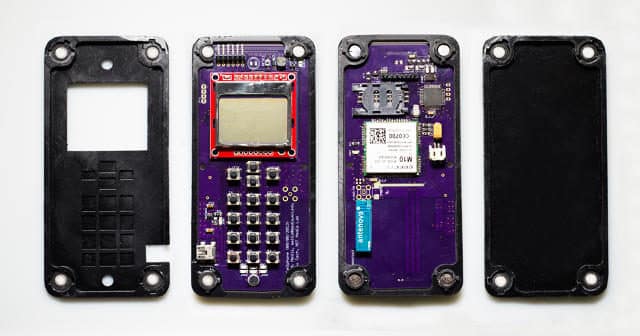Manufacturers are becoming more advanced than ever.
Skylar Tibbits, a research scientists at MIT, has been developing a manufacturing process that lets products build themselves with no human labour involved. It’s an incredible advancement that might shake up the current way we manufacture goods.
As of yet, Tibbits has teamed up with co-director Jared Laucks and designer Marcelo Coelho to create things that assemble themselves. So far, they’ve created furniture that can build itself and even self-lacing sneakers.
Their latest projects, funded by DARPA, involves a series of modular phones that can self-assemble through a complex yet simple system. Essentially, the roughly six-part phones go through a tumbler like machine – something that resembles a drying machine – and as the parts toss around they eventually click together with lock-and-break mechanisms as well as magnets.
Depending on the speed of the tumbler and the amount of materials being assembled, some products could take only a few minutes to assemble.
Tibbits began his research in 2011, where he experimented with 4D printing, which is similar to 3D printing only that the materials that are produced grow and change on their own.
A couple years later, Tibbits got the idea of a self-assembled phone when David Mellis’s, a professor at MIT, created card board cell phones that were DIY, meaning you actually build them yourself with about $200 in parts.
Tibbits was captivated by the idea and began researching ways to make it so that phones built themselves. Inspired by the way nature is born, Tibbits wanted to make products that didn’t require human intervention.
“If you look at how things are manufactured at every other scale other than the human scale – look at DNA and cells and proteins, then look at the planetary scale – everything is built through self-assembly,” he says. “But at the human scale, it’s the opposite. Everything is built top down. We take components and we force them together.”
While these ideas are wildly innovative, they could also cause a dramatic shift in the way we produce materials because of how inexpensive this method is.
Despite the fact that manufacturing output has grown 0.9 per cent in North America, a new system like this could cause people to lose jobs and companies to adopt new assembly practices to earn extra cash.
It’s a double edged sword, one the one hand we’re getting cheaper products and at a much faster rate, but on the other hand we’re completely demolishing the manufacturing industry and ushering in a whole new way of doing things. It’s creative destruction at its finest.
Regardless of the economic concerns this may bring, the technology offered is still incredible. Tibbits is confident that this could be the next big thing. The tumbling assembly process offers a wide array of opportunity.
“Right now the phone is predetermined, and we’re using this process to assemble that phone,” he says. “But imagine you take a circuit board and you have different logical building blocks and those logical building blocks can be tumbled around – you can have different functionalities.”










